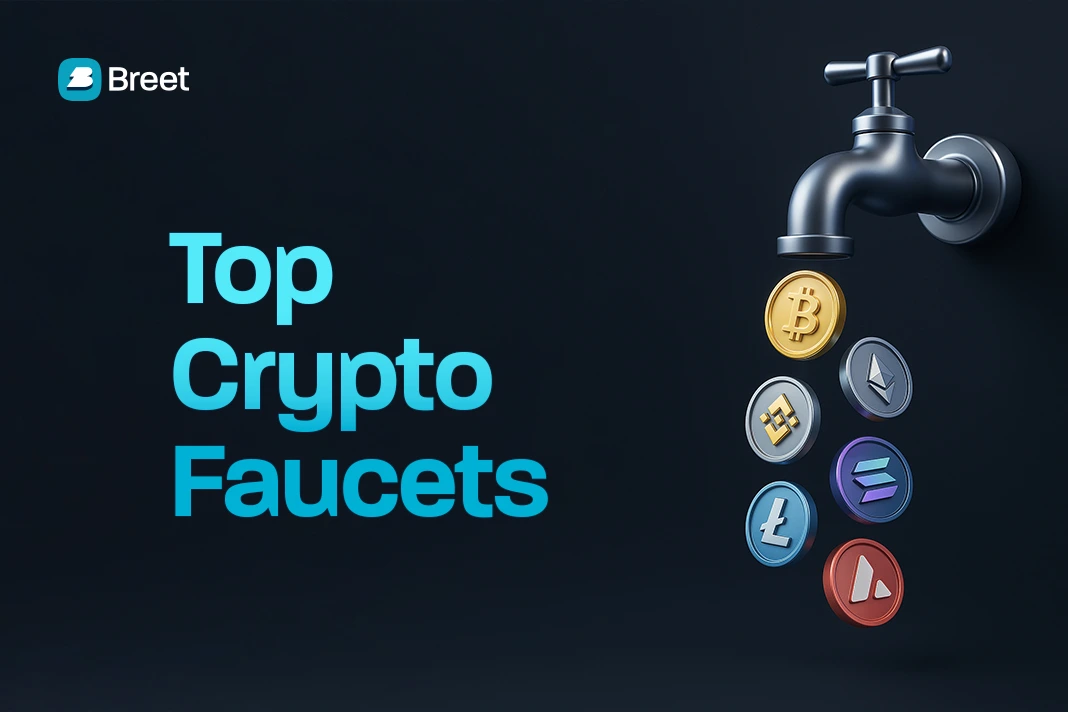Staking is one of many ways to earn passive income through crypto.
It doesn’t require trading or airdrop farming. In simple terms, you lock your crypto coins up to accumulate profits over time.
It is like giving a friend $10,000 to hold for a month. During the time your friend holds onto the money, he adds a fixed percentage to it every day.
Once the month ends, he returns the money with the accumulated profits.
However, several crucial considerations exist, like how long you stake for and potential returns and risks. This article explores these concerns and does a deep dive into what staking in crypto is.
Stick around for a comprehensive, beginner-friendly overview of the process and how to begin.
Key Terms To Understand Before Reading This Article
- Proof of Stake: Proof-of-stake is a way for cryptocurrency blockchains to verify transactions and add new blocks. The system basically entails users “stake” their coins as a form of collateral.
- Validator: A person on a network that checks if a crypto transaction on the network is real. They often have to stake (lock) a certain amount of tokens to be chosen.
- Proof of Work: This is the traditional system where crypto transactions are confirmed and new blocks formed when a person using a computer solves difficult math puzzles.
- Lock-up Period: It is the time during which you lock crypto coins, so you can’t sell or trade, but you earn rewards.
Related:
- How to Generate a Free Bitcoin Invoice
What is Staking in Crypto?

Staking is simply locking up your cryptocurrency for a while. You can’t sell or trade it.
You use the locked tokens to run the network and you earn rewards for your help.
Basically, you stake your tokens to secure and run a network. In return, the network pays you interest, which accumulates the longer you stake.
Staking supports the blockchain in several ways, which is why the blockchain rewards those who stake.
By staking, you play a role in validating transactions. This process strengthens the network’s decentralization and security. Also, it ensures that validators are honest; otherwise, they risk their locked-up tokens.
Those who stake earn rewards as the network pays out tokens on each new block made by a validator and transaction fees associated with the blocks. The paid-out reward is proportional to the amount staked and duration.
Picture staking’s rewards like the interest you get when you deposit in a traditional bank, but with much higher returns.
However, the process differs on several grounds, like the bank’s deposit being more liquid and offering less risk. More on that in this article.
How Does Staking in Crypto Work?
Staking in crypto can be a bit complex.
This section aims to simplify the process, so you can walk away with an idea. C
rypto staking is done on a Proof of Stake (POS) consensus. In this system, network participants lock up an amount of their tokens to act as collateral.
At random, the network picks out validators. Decision-making is usually swayed by the amount staked and duration.
The validators propose and validate new blocks. It is much more efficient than traditional Proof-of-Work mining in Bitcoin. Randomly selected validators help keep the network decentralized, and they are incentivized to act as they should.
You can stake by operating your validator or delegating a validator. When you do, your staked amount serves as a security deposit for verifying transactions and securing the network.
Most PoS networks enforce a minimum lock-up period.
It can be a couple of days, weeks, or months.
Trying to unbound (withdraw) before the agreed date leads to unbounding delay; you will have to wait a while to receive your funds.
Staking rewards (returns) vary significantly based on the network you stake on. For instance, you can expect 4 to 6% per annum on Ethereum.
However, smaller chains have a much bigger potential for 10 to 20% per annum, but with much higher risks. You decide how long you want to lock your tokens for, but note it will impact your returns.
For You:
- 9 Best Crypto OTC Trading Platforms in 2025
Benefits of Staking in Crypto
Staking in crypto is one of the most sought-after passive incomes for several reasons. Here are the benefits of staking cryptocurrency:
- Passive income potential: Staking follows the expected blueprint for passive income. The process rewards you daily simply for holding and locking your tokens. You don’t need to actively trade or farm air drops. The rewards are compounded and can range from 4 to 20% per annum.
- Environmentally friendly (vs. mining): If you are an environmentally-conscious investor, staking is a much more energy-efficient way to run a blockchain compared to traditional mining, which uses a lot of electricity. Hence, blockchains that use PoS consensus like Ethereum and Cardano are more eco-friendly.
- Contributing to network security and efficiency: Staking helps validate new blocks and secure the crypto network. Validators must act as required or risk losing their staked amount. This system offers a steady ground for decentralization and security.
- Long-term holding incentives: Staking incentivizes long-term investment. The longer the stake period, the higher the returns.
What are the Risks and Challenges of Staking in Crypto?
While staking has an attractive crypto passive income potential, it is not without its risks and challenges.
Here are the risks and challenges that you should note about staking in crypto:
1. Price volatility
One of the major issues with crypto investments is token price volatility. While you can earn substantial staking rewards, the market value of your staked token can drop significantly, which reduces your potential return.
So, even if you reap a high APY, the price volatility can lead you to reap less monetary value of what you locked in at the start.
2. Lock-up periods and liquidity issues
Most networks demand a lock-up or unbinding period before you can access your funds.
You can’t withdraw or sell assets during this period, even if the market crashes. This limited liquidity limits your autonomy.
3. Slashing (loss of funds for validator misbehavior)
Any missteps from validators, such as going offline and double signing, can lead to a slashing of their staking rewards.
There are several real-life examples of this. It goes to show that staking provides a small wiggle room for validators.
4. Platform risks (centralized exchanges, DeFi risks)
Another significant concern is platform risks.
Staking on centralized exchanges or custodial services means there is a risk of losing your assets to hacks and mismanagement.
Similarly, if you opt for DeFi staking, possible flaws in the smart contract can lead to loss of funds. Hence, it is crucial to properly inspect the platforms you will use to prevent preventable complications.
How to Start Staking in Crypto: Step-by-Step
You don’t need extensive technical know-how to understand staking in crypto.
It only takes a series of steps, and voila, you can stake and start reaping daily rewards. Here are the steps to follow from start to finish:
1. Choose a staking-supported cryptocurrency (e.g., ETH, ADA, SOL)
The first step to staking in crypto is knowing the cryptocurrency you want to stake.
There are a couple of mainstream options. It goes without saying that cryptocurrencies that use the Proof-of-Work (PoW) consensus, like Bitcoin and Litecoin, don’t typically qualify for staking.
Staking is limited to those that operate the Proof-of-Stake consensus, such as Ethereum, Cardano, Tron, and Solana.
Do your research for the potential returns and unique rules. Compare the networks and choose the one that best matches your taste.
2. Select a platform or wallet (exchange vs. self-custody)
Once you have decided what token to stake, the next big thing is to decide where to stake it.
The options include a centralized exchange or a self-custodial wallet. Exchanges such as Coinbase, Kraken, and Binance make staking a lot easier. You only need a few clicks and still enjoy the reasonable staking returns.
Alternatively, you can opt for self-custodial wallets like Trust Wallet and MetaMask.
This route provides more autonomy. You get to delegate your tokens to certain validators and control your private keys. However, using self-custodial wallets demands a lot more set-up time and know-how.
3. Decide between solo staking, pool staking, or using a staking provider
Decide on how involved you hope to be. There are several levels to staking, from solo staking and pool staking to using a staking provider.
If you choose solo staking, you become a validator.
This means you reap rewards. However, this position demands constant uptime and specific infrastructure.
The pool dating option allows a little more flexibility as you delegate small holdings to established network validators. This way, you don’t manage nodes and, in turn, reap proportional rewards.
Finally, there are staking providers, like StakeWise and Everstake, that allow you to stake but not worry about the technical aspects of the process. Overall, solo staking promises the most returns, but with a lot more commitment that might not be beginner-friendly.
4. Start staking and tracking rewards
You can only stake a token you have.
On that note, the first step is to get the token. Usually, you should be able to buy the token on the staking platform, whether the centralized exchange or self-custodial wallet.
Otherwise, transfer the amount to the provided wallet address.
For most platforms, you might have to do a KYC.
Once you complete this step, it is pretty straightforward. Follow the platform-specific steps, such as entering the amount you want to lock and others. Each platform has its unique steps.
Be attentive to the terms and conditions to avoid penalties. You can track your rewards daily, weekly, and monthly until the lock-up time elapses and you have access to your assets and rewards.
Knowing how to make money from crypto staking is simple as long as you follow the required steps.
Why Use Breet to Convert Your Staking Rewards to Cash?

After a long stake period and your profit arrives, where do you sell for cash?
Only a few platforms directly allows you to convert crypto to cash and then transfer to local bank accounts.
Breet stands out as the best option. Here is why you should convert your staking rewards at the Breet App:
- Quick Transactions: Breet is one of the few platforms that offers direct conversion of tokens, such as ETH and Cardano, to cash. Also, the transactions are fast and takes less than 287 seconds.
- Automatic Settlement: Users on Breet don’t have to endlessly process their transactions. Fortunately, Breet handles all the transactions automatically. Hence, crypto-to-cash conversions are fast and easy.
- Broad Compatibility: Breet 3.0 supports over 40 cryptocurrencies, including Ethereum, Solana, Cardano, and USDC. You can deposit your staking rewards to withdraw them as cash.
- No Hidden Fees: At Breet, there are no imposed fees or sneaky workarounds. Once you transfer, you can expect little to no fees.
- OTC (Over the Counter) = Less Risk: Unlike P2P models, Breet eliminates the counterparty risks, volatile rates, and fake buyers. You sell directly to the platform and get your equivalent in Naira or Cedis.
Don’t Miss:
- The Best 9 USDT Trading Platforms, Ranked
Final Takeaway on Staking in Crypto
Staking is one of the several ways to earn passive income with crypto.
However, as with other crypto-related ventures, it has its risks and rewards.
This article discusses both sides of the story to ensure you make an informed decision regarding the process.
When you reap your staking rewards and need seamless conversion to cash, use the Breet App.








